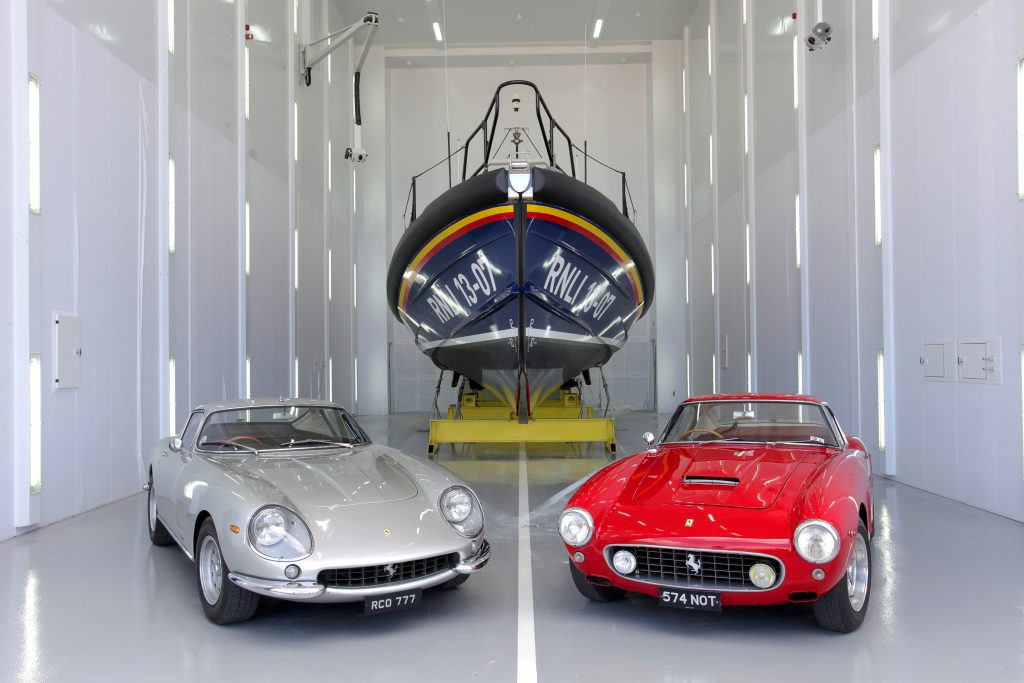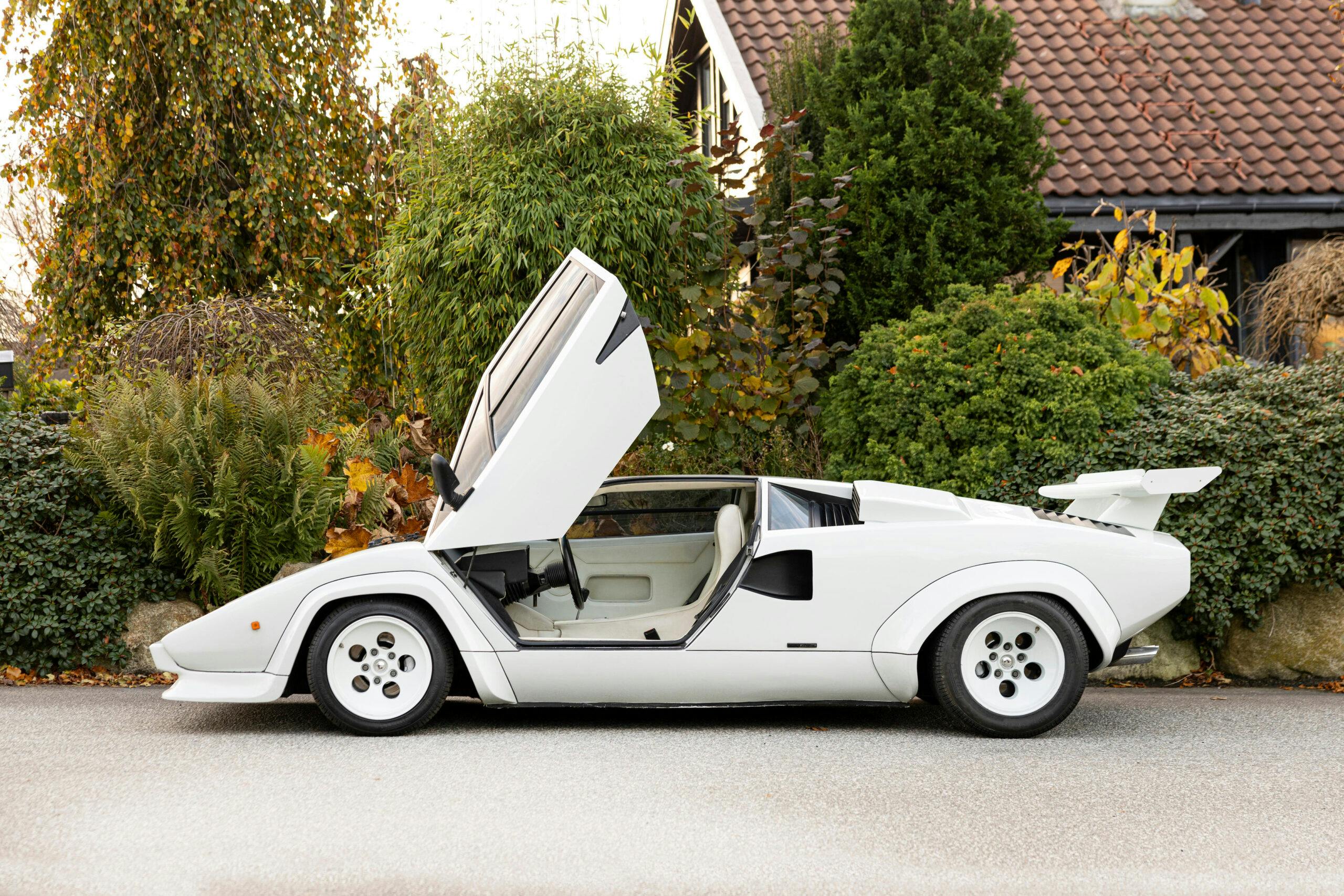What am I bid for this long-established classic car auction company – a north-of-England firm with such a good reputation it can steal the thunder from its fanciest competitors in London’s West End? Where shall we start, ladies and gentlemen?
This particular sale never happened. And nor will it ever. Simon Hope, who-co-founded Warrington-based H&H with Mark Hamilton more than 30 years ago is frank about the dire consequences of putting his cherished business on the block.

“If people think an auction house is for sale, then they’re sure to think you’re about to go bust,” he says, with a wry laugh. “Maybe there aren’t many assets: goodwill is the main thing an auction house has got, along with the staff who work to bring the money in.”
The issue had been playing on Hope’s mind for a long time: how to ensure that H&H could continue selling countless valuable classic cars and motorbikes without him when the time came. His partner left to pursue other interests in 2008, giving Hope 100 per cent ownership, and despite weathering the catastrophic global financial crash that year, soon afterwards the boss became seriously ill.
“My three sons are doing their own thing, which is as it should be, but I realised there’d come a time when I would have to pass on the baton. So I had lunch with a group of businessman friends – some of them very high-powered and successful – to seek their counsel. Soon afterwards I started a share incentive scheme, which under the government rules back then became a tax-free benefit to the employees. But that wasn’t particularly successful – not everyone appreciated what they were being given.”
Publically, there was not a hint of Hope’s succession conundrum, one that has bothered everyone from window cleaners to factory owners ever since hard currency superseded the barter system to make the world go round. Indeed, in 2015 H&H made global headlines like never before. A Northamptonshire footwear tycoon called Richard Colton passed away and his executors picked H&H over the ‘big names’ of the South-East to sell two of the deceased’s Ferraris, a 250 SWB and a 275 GTB. With no reserve, these mouthwatering cars made £6.6m and £1.9m respectively and the proceeds went directly to the Royal National Lifeboat Institution in the biggest single bequest to the mariners’ charity of all time, eventually funding two, brand new, state-of-the-art rescue craft.

The sale put H&H on a roll but that, plus Hope’s wavering health, only intensified his urgency to decide what to do. He started to look at selling H&H to one of a number of venture-capital companies which expressed an interest and pored forensically over its accounts. But after a while it became obvious to him that this would be a disastrous way to treat the team who’d helped build H&H into one of Britain’s most successful classic car salerooms.
“It was like dealing with the most hardened secondhand car dealer you could possibly imagine – very unpleasant,” he says. “They’re basically thieves and vagabonds!
“I realised I wouldn’t be giving my staff a future but an ongoing nightmare, because the overhead was going to go up by nearly 40 per cent. These sort of deals, essentially, saddle a business with the debt of buying it. I felt that they didn’t deserve to be thrown to the lions like that.”
After three months of what he calls “fraught negotiations in a ridiculous, costly process” Hope got a bad feeling and walked away. All was not lost though: more recently he became aware of the Employee Ownership Trust (EOT) scheme launched by the then-coalition government in 2014 as a way to kickstart the so-called ‘John Lewis economy’, where workers call the shots and, if all goes well, also share out the rewards of doing a good job.
After sleepless nights during the pandemic, Hope realised an EOT would preserve the business and the integrity that the staff had helped to build over the years. And it seems he is not alone. According to the Employee Ownership Association, the rate of businesses, often family-owned concerns, being transferred to staff ownership has soared during the dark, life-reassessing days of the Covid crisis.
Up to June 2021 their number swelled from 480 to 730 across the UK, and most of them are EOTs. The 50 biggest have combined sales of more than £21 billion, and over 180,000 ‘owners’ who also make up the payroll, while the sector as a whole is worth £30bn and speaks for about 4 per cent of the UK’s annual economic output. This more inclusive form of capitalism is quietly revolutionising the world of work.
Even in this super-league there are a few with strong links to the car world. The distributor Unipart, for example, is 52 per cent-owned by its 6733 workers, and Scott Bader – given to its workers by the philanthropic founding family – created polymers used in car paint and is now the property of the 694 people who staff it.
Perhaps overall the most famous example of the EOT switch is hi-fi retail chain Richer Sounds where founder Julian Richer transferred three-fifths of his company into trust for his loyal workforce. Bristol-based Wallace & Gromit creators Aardman Animations went the same way, and if you have your hilariously misshapen parsnips brought to you by someone from Riverford Organics then the driver will likely be part of the 74 per cent of staff who own it.

“I’d never heard of an EOT but the more I looked into it the more I thought it would work,” says Hope. “Within this sort of system, you give your staff the opportunity to completely change their earning profile over their lives, and you get an agreed amount, tax-free, over a period of time so you can go off and enjoy your retirement. However, until it is all transferred, you can’t just walk away: you have to stick around to make sure it functions, and help it through the transition. You have to take some responsibility for passing it over. But then, eventually, they will own the trust that owns the business, and it’s cost them nothing. If it works for everybody then it’s a very, very good scheme.”
Trusts fund the purchase of the founder’s business through future profits over a set period of transfer, although very occasionally the owner just donates it to the trust. And while EOTs can vary in detail, there are two aspects they must all adhere to: the trust must hold more than 50 per cent of the shares in the company; and if employees receive any benefit from the trust, they must all be included and on the same terms.
An EOT is significantly different to a worker co-operative, where workers collectively organise their destiny. That branch of employee ownership is itself booming, and worth £11bn to the UK economy. But an EOT can involve the company’s founders to a greater or lesser extent, or eventually not at all while staff benefit from dividend-like bonuses that are free of income tax.
Simon thinks that, in the esoteric world of the classic car ‘industry’, which is stuffed with specialists that are owned and managed by one person, an EOT could be the perfect way to make sure the business can survive (obviously along with passing on the skills and traditions that might otherwise be lost completely). He says he can think of 20 or 30 enterprises off the top of his head where it might stop them vanishing when the founder can’t, or can’t face, carrying on any longer. One of the pioneers of the EOT scheme, indeed, was Shropshire-based restoration company Classic Motor Cars, which changed status in 2016 when founder Peter Neumark, then almost 70, gave the going concern to its 60 craftsmen.

Simon Hope again: “I have 18 full-time staff and as auctioneers, when you have a good sale there’s nothing better. The buzz you have when 100 cars are going under the hammer and then 98 of them sell – that’s a remarkable result but we did achieve it recently – is what turns us people on.
“If it’s a really good car then it sells itself. It doesn’t have to go to Monterey or wherever to make the most. It’s the car that’s the star. But remember, before you step up to the rostrum, you haven’t earned a penny and you can’t necessarily control what happens. Then as soon as it’s finished, you’re on to your next sale.”
Hope ardently wishes the legacy he’ll eventually leave behind will encourage people who love all that to want to work for H&H. Recruiting “people who know people with classic cars, who will then trust us” has always been tough, not least because Warrington is far removed from Bond Street.
“This is very much a trust-based business, it’s about who and what you know, so it’s not like making widgets or anything. For me an EOT is the exit strategy that could suit you when the time comes, because all good things come to an end one day. How it all works out in the end, well, we’ll have to see. The way people will react to owning a business, not just working for it, can be very different. Some find it inspiring, some worrying…”
Read more
Brexit rumbles on – and the little guys are carrying the burden
Report: Is the thriving classic car market in danger of over-heating?
Donor vehicle: The benefits of leaving your classic car to charity









